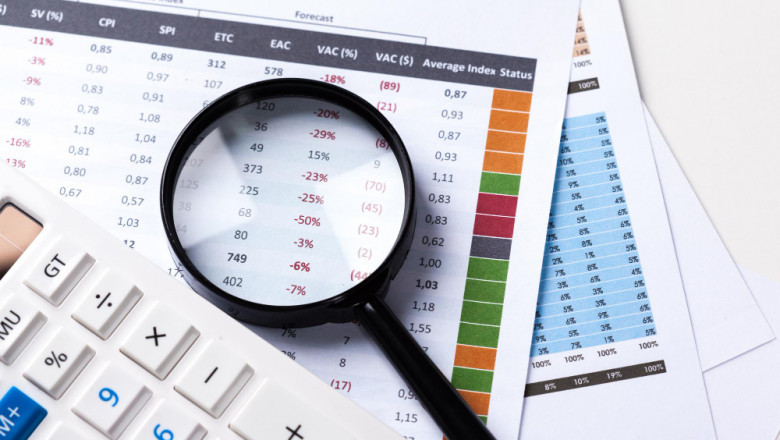views
A bank statement is more than just a summary of your financial transactions—it is a window into your financial habits and a powerful tool for gaining deeper insights into your personal or business finances. Whether you are an individual looking to manage personal finances or a business striving for financial health, understanding how to analyse bank statement properly can reveal crucial information that empowers better decision-making.
In today’s fast-paced world, where financial decisions can have significant long-term implications, the ability to interpret your bank statement effectively is a vital skill. While many people view their bank statement simply as a list of transactions to check for errors, it holds far more value when thoroughly examined. This blog will guide you through the steps to analyse bank statement data and how to use the information to improve your financial outlook.
1. Understanding the Basics of a Bank Statement
Before diving into analysis, it’s essential to understand the components of a bank statement. Typically, a bank statement will include:
-
Transaction Details: A chronological list of deposits, withdrawals, fees, and other activity.
-
Account Balance: The starting and closing balance for the statement period.
-
Fees and Charges: Any fees charged by the bank, such as service fees or overdraft charges.
-
Interest: If applicable, the interest earned or charged on the account balance.
This information provides the foundation for financial analysis. Understanding these basic elements will help you interpret more complex patterns and make better financial decisions.
2. Tracking Your Spending Patterns
One of the first steps in analysing bank statement data is identifying and tracking your spending patterns. Reviewing your transactions helps you understand where your money is going. Are you spending a large portion of your income on discretionary items like dining out, shopping, or entertainment? Are there subscriptions or memberships that you no longer use but are still paying for?
To gain a better understanding of your financial habits, categorize your expenses. Most bank statements include transaction descriptions that will allow you to group expenses by category such as groceries, utilities, entertainment, or transportation. By separating these categories, you can assess whether you are overspending in any particular area and adjust your budget accordingly.
Over time, analysing your spending patterns enables you to spot trends and make adjustments to your habits. It can also highlight opportunities for savings, such as cutting back on non-essential purchases or finding cheaper alternatives for recurring expenses.
3. Identifying Unnecessary Fees and Charges
Bank statements often include various fees, such as maintenance fees, overdraft charges, or ATM withdrawal fees. While these fees may seem small in isolation, they can add up over time, draining your account balance. By regularly analysing bank statement details, you can identify areas where you’re being charged unnecessary fees.
Start by reviewing the fee section of your statement for any patterns or recurring charges. If you find fees related to account maintenance, ask your bank if there are ways to avoid them, such as maintaining a minimum balance. Similarly, if you’re being charged for overdrafts, consider setting up alerts or linking a savings account to cover potential shortages.
If there are fees tied to ATM withdrawals outside of your bank’s network, check if your bank offers fee-free ATMs in your area. By addressing these areas, you can reduce unnecessary costs and improve your financial position.
4. Verifying the Accuracy of Transactions
Another critical aspect of analysing bank statement data is ensuring that all transactions are accurate. It’s important to regularly check that there are no discrepancies or unauthorized charges on your account. Financial fraud, such as identity theft, is an unfortunate reality, and frequent reviews of your bank statements can help you catch suspicious activity early.
When analysing your statement, compare each transaction to your receipts, digital payment records, or any other documentation that may corroborate the listed charges. If any discrepancies arise, contact your bank immediately for clarification or dispute resolution. Early detection can prevent further unauthorized activity and protect your financial security.
5. Evaluating Your Savings and Investment Habits
Your bank statement can also provide insight into your savings habits. It’s essential to assess how much of your income is going into savings, retirement funds, or investment accounts. Look for automatic transfers that you’ve set up to build an emergency fund or grow your wealth. Is this amount sufficient to meet your long-term financial goals?
By reviewing your savings and investment activity, you can determine if you are on track to meet your financial objectives or if adjustments need to be made. If you find that you’re not saving enough, consider increasing the percentage of your income that you set aside for future goals.
Conclusion
The importance of analysing bank statement data cannot be overstated. By understanding the details of your bank transactions, you can improve your financial health, identify areas for growth, and reduce unnecessary expenses. With the help of modern technology and a consistent review process, analysing your bank statement becomes an empowering practice that helps you make better, more informed financial decisions.
Whether you’re managing personal finances or overseeing a business, the ability to assess your bank statement critically provides clarity, reduces risk, and ensures you are always on top of your financial goals.













Comments
0 comment